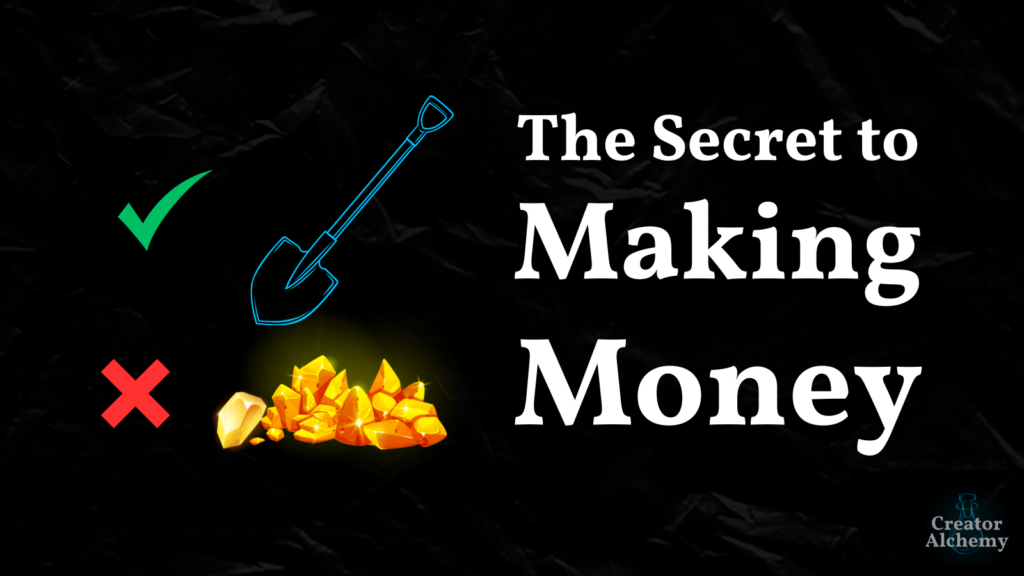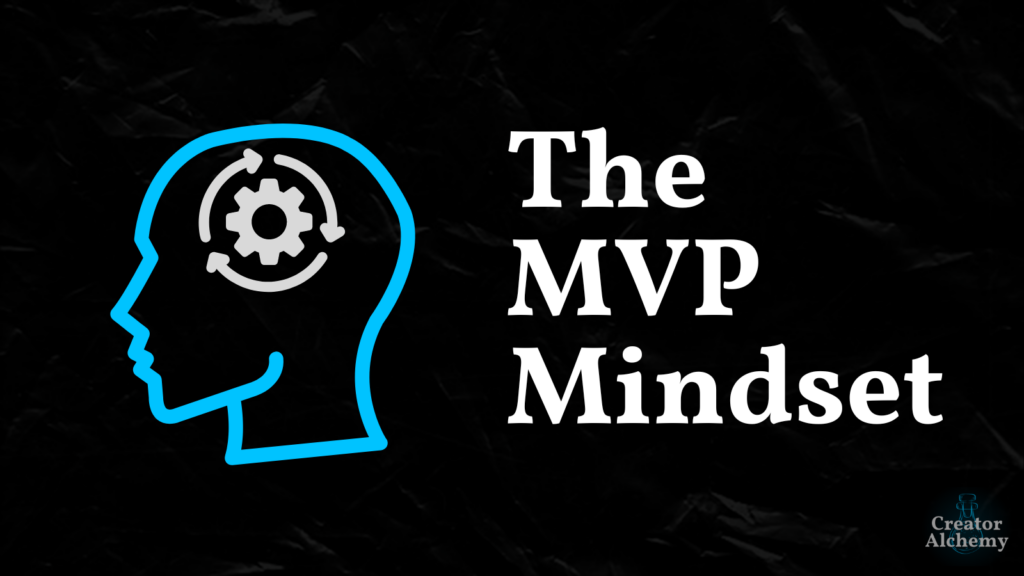When was the last time you were vulnerable with your audience?
I’m a 6’, 265lbs, bearded, tattooed dude who does martial arts, loves Stoicism, and has an issue with authority.
Trust me, vulnerability isn’t something that comes naturally to me.
Feeling vulnerable sucks, which is why most people avoid it.
It’s easier to hide behind a facade of invulnerability—pretending to be the perfect, pristine, polished authority in your niche.
No flaws. No losses. No mistakes.
Only wins. Only highlights. Only awesomeness 24/7/365.
But time and time again, when I embrace my own vulnerability, 3 things happen:
- My connection with my audience gets stronger
- My content becomes more unique
- My message resonates deeper
But there’s a right way and a wrong way to embrace your own vulnerability.
Do it wrong, and you push people away.
Do it right, and you attract an audience of raving fans.
Here are a few things I’ve learned about the power of embracing what I call tactical vulnerability…
•••
Pulling at the Threads of Vulnerability
“Vulnerability is the birthplace of innovation, creativity, and change.”
— Dr. Brené Brown
I love Twitter. I love blogging. And I love YouTube.
But I, like most people, am tired of endless how-to lists, faux-thought leadership, and blatant copying of other people’s work that’s become all too common.
Everyone’s spouting the same trite lessons, following the same formulaic formats, and wearing the same masks of absolutist expertise.
We’re tired of the same content like:
- “The Top 7 Leadership Books Every CEO Must Read”—when searching “leadership books” on Amazon would’ve pulled the same ones up.
- “5 Hidden Features of the New iPhone”—that are the most obvious features any digital native would figure out within 5 minutes of playing with it.
- “3 Study Habits to Crush Your Exams”—spoiler alert: schedule your study time, take breaks, and study with the intent to explain it to someone else. The same things anyone who’s ever studied anything ever knows.
- “Ask This 1 Question to Conquer the Tyranny of the Urgent“—ok, I’m guilty of this one. But it’s honestly a super helpful question to ask.
It just seems like everyone’s pretending to be someone they’re not—to appeal to other people pretending to be someone they’re not.
Where’s the authenticity?
Where’s the vulnerability?
Where’s the unique human connection we all crave?
This craving for connection, vulnerability, and authenticity seems to have fueled the mass influx of people joining Threads by Meta in its first few days of launch.
I tried to capture the unique vibe everyone was experiencing:

This isn’t a plug for Threads.
Honestly, I’m bullish on Twitter and bearish on Meta stuff—I use Facebook and Instagram as a consumer, but my experience of using those platforms as a creator has been atrocious. After I got actually shadowbanned (meaning links to some of my articles couldn’t be shared on Meta platforms), I stopped putting effort into growing my FB and IG accounts.
But the sentiment Threads represents, the culture people are trying to create there because there are no preexisting social norms or “best practices” yet gives it an energy no other platform has had in a very long time—if ever.
It’s like everyone collectively gave everyone else permission to embrace vulnerability and authenticity.
Which is fueling a feeling of genuine connection that’s been sorely lacking in social media for years.
There’s no rule saying we can’t transplant those same vibes back to Twitter, or anywhere else we want to go.
For too long, creators have fallen into the trap of creating predictable, sterile, formulaic content that could be easily outsourced to AI, a low-skill VA, or a chimp with a keyboard and internet access.
But an intellectual pajama party?
Sharing your stories, your experiences, your authentic self—all with the intent of building genuine connections, showcasing real thought leadership, and building a body of work that inspires others to reach their potential?
That can’t be outsourced. It can’t be copied. It can’t be bought.
It can only be created, brick by brick, by people like you and me.
So how do you actually do that?
By embracing vulnerability.
But not just any kind of vulnerability…
•••
Tactical Vulnerability 101
Trauma-dumping on your audience or treating the internet like your personal high school diary isn’t helpful.
Vulnerability for vulnerability’s sake just makes you an emotional liability for anyone who crosses your path—and no one wants to sign up to be your emotional support animal.
No. If you want to build a strong relationship with your audience with content that resonates on a deep, existential level, the most powerful form of vulnerability I’ve found is what I call tactical vulnerability.
Tactical vulnerability is when you selectively share relevant pieces of yourself and your past with your audience for a specific reason.
If sharing a piece of yourself doesn’t in some way benefit your audience—by illustrating a point, validating their own experiences, or proving you’ve been in their shoes before moving on to share your takeaways from your own experiences—it’s probably not tactical vulnerability.
Otherwise, it’s just regular old now-everyone-feels-awkward-because-you-overshared vulnerability. If you do that, you will either push your audience away or attract a very specific kind of person (that, speaking from experience, you don’t want to attract).
Ok, so tactical vulnerability is the way to go, but why?
Here’s what you need to understand…
•••
Why is Tactical Vulnerability So Powerful?
“To create is to make something that has never existed before. There’s nothing more vulnerable than that.”
— Dr. Brené Brown
Tactical vulnerability is one way to do what psychologists call building rapport.
Rapport, aka, your relationship with someone, is the primary factor in whether therapy or coaching (or virtually any other type of collaboration) will work.
Think about it…
In a therapy or coaching scenario, you need a sense of psychological safety (aka, you have to trust the person in front of you) to open up.
If there’s no rapport, there’s no vulnerability.
If there’s no vulnerability, there’s no honest, authentic, deep discussions that can occur—which means you won’t get huge results.
This is why building rapport is one of the 3 pillars of world-class coaching (and something I’ve spent 15+ years learning how to do well).
Because in order for someone to open up and engage deeply, they have to trust the person in front of them.
So how does this apply to your content?
Simple.
If you want your audience to trust you, to “remark” upon your content, and feel a genuine connection that’s damn-near impossible to break—practice tactical vulnerability to build rapport.
When I talk about growing up poor, living through domestic violence, or getting fired, I’m not doing it to have people feel sorry for me.
I’m doing it to show I know what it’s like to face adversity and limiting beliefs, so people can feel connected to me and trust that I know what I’m talking about when I share some of the strategies that’ve helped me overcome my situations and become a creator and entrepreneur.
My course, Build an Intentional Life, is based on the best strategies I use with 1:1 clients and have used to help dozens of other creators clarify how to build a fulfilling life and thriving business aligned with their values. Yes, people say they trusted the course would be good because I’m a psychologist. But the parts of the course they remember, the parts that truly resonated with them and inspired them to take action in their own lives are when I was tactically vulnerable.
Because when I talk about my own experiences struggling with limiting beliefs, hard lessons learned of how to overcome them, and share stories of the consequences of living a life in mediocrity and unaligned with your values—these are stories and experiences unique to me that people connect with, because these struggles are synonymous with being human.
So by sharing your human-ness with people, you’ll connect with them.
Because we connect over adversity, over our shared imperfections, and over our vulnerabilities as humans.
Tactical vulnerability also allows you to create content only you can create.
No one else could’ve written “Voices of the Mountains,” because it’s my story—even the thumbnail image is unique because I took it walking around the very holler I talk about in the article. But anyone whose ever felt pressured to hide their accent or culture to succeed immediately resonates with my story.
Back before I’d decided to focus on helping creators reach their potential, I still wrote about mental health stuff. This article about my own experiences living through domestic violence was hard af to write, but I’ve heard from several people it was such an emotionally moving piece, they cried reading it.
AI can’t make you cry.
Formulaic content can’t resonate with you.
Threadbois can’t connect with you on an existential level.
If you pretend to be perfect, no one will connect with you—because imperfect people can’t connect with perfection.
And we’re all imperfect.
But if you tactically share your imperfections?
You’ll form the deepest connection with your audience imaginable.
And through this connection, you, and your audience can move fucking mountains.
•••
Final Thoughts
“Vulnerability is not weakness…vulnerability is our most accurate measurement of courage—to be vulnerable, to let ourselves be seen, to be honest.”
— Dr. Brené Brown
Tactical vulnerability opens the doors to authenticity, connection, and self-expression.
It allows us to share the things that make us truly unique and form a connection with our audience that can’t be broken.
No AI, no threadboi, no visual essay template, no thing can compete with that.
So I’m done trying to put on airs, to write to an algorithm, or create content I’m “supposed” to create.
I’m just going to be me. Share my stories. My experiences. My ideas.
I’m going to embrace my own tactical vulnerability and authenticity.
And I hope you’ll join me.
Because the world doesn’t need more posturing or formulaic bullshit.
It needs more people embracing who they are, sharing what they believe, and giving others permission to do the same.
It feels scary at first.
But we’re not here to play it safe.
We’re here to create something powerful.
Something only we can create.
And through embracing our own vulnerability and authenticity, we inspire and empower others to do the same.
That’s how we can collectively reach our potential.



